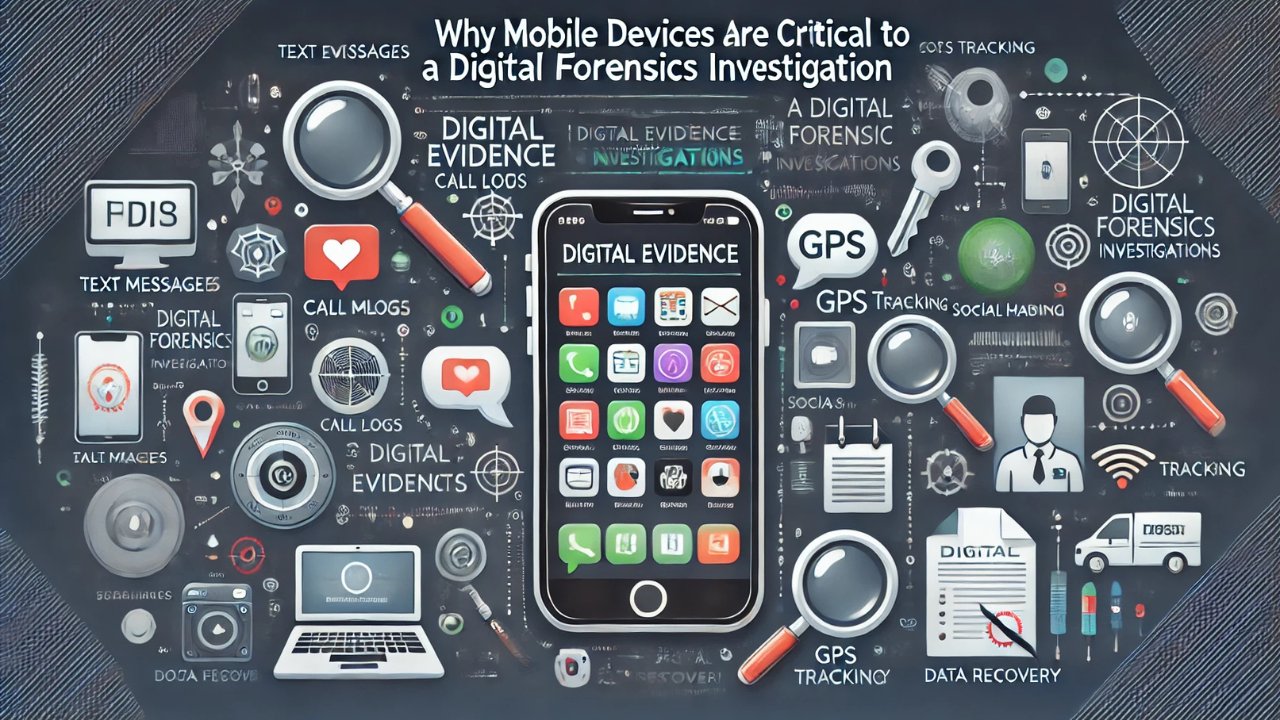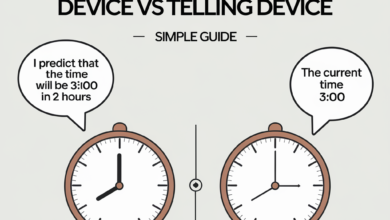I. Introduction
In today’s digital age, mobile devices are not just communication tools; they have become essential parts of our daily lives, containing vast amounts of personal, why are mobile devices critical to a digital forensics investigation? professional, and even confidential data. From smartphones to tablets, these devices hold crucial evidence in various digital forensics investigations. Digital forensics involves the identification, preservation, analysis, and presentation of digital evidence, and mobile devices have emerged as primary sources of this evidence.
The need for mobile device forensics has risen dramatically due to the increasing use of mobile phones in criminal activities. These devices are used for communication, transaction processing, and storing multimedia files. In many criminal cases, mobile devices serve as a goldmine for investigators, providing crucial insights into a suspect’s behavior, whereabouts, and interactions. With the advancement of technology and the evolving nature of crime, mobile devices play a vital role in solving criminal cases, making them indispensable tools for law enforcement and forensic investigators.
As digital forensics continues to evolve, understanding the importance of mobile devices in investigations is crucial for modern-day law enforcement. In this article, we explore why mobile devices are critical to digital forensics investigations and how they aid in solving crimes.
II. Role of Mobile Devices in Digital Forensics
Mobile devices are no longer simple communication tools. They are portable computers that store a wealth of information. These devices can contain text messages, emails, photos, videos, social media interactions, browsing history, and even GPS data that provide vital evidence for criminal investigations. The wealth of information stored on mobile devices makes them essential for digital forensic experts in solving cases ranging from cybercrimes to violent crimes.
One of the most significant roles that mobile devices play in digital forensics is storing communication logs. Text messages, call logs, and emails can provide investigators with a detailed record of communications between suspects and others involved in a crime. Social media apps on mobile devices, such as Facebook, Instagram, and Twitter, can also hold evidence of online interactions that may reveal motives, relationships, and even plans for illegal activities.
Another crucial aspect is GPS and location data stored on mobile devices. This data can be used to track a suspect’s movements, identify crime scenes, or even provide an alibi. Forensic investigators can analyze GPS data to reconstruct the timeline of events, providing invaluable insight into the suspect’s whereabouts during a crime.
In addition to these communication and location-based data, mobile devices also store multimedia files. Photos and videos can serve as evidence of criminal activity, providing visual documentation of crimes or important evidence at crime scenes. The ability to retrieve these files during a digital forensics investigation can make or break a case.
III. Mobile Device Forensics Techniques

Mobile device forensics is a specialized branch of digital forensics that requires specific techniques to extract and analyze data from mobile devices. The techniques used in mobile forensics can vary depending on the type of device, its operating system, and the nature of the data being investigated. There are three primary extraction methods used by forensic experts: logical extraction, physical extraction, and chip-off analysis.
Logical Extraction
Logical extraction involves extracting data from a mobile device through its operating system. This method is generally non-invasive and can be performed without removing the device’s storage chip. It allows forensic experts to retrieve data such as contacts, messages, call logs, and app data. Logical extraction is the most common and least invasive method used when investigating mobile devices.
Physical Extraction
Physical extraction involves creating a bit-by-bit copy of the mobile device’s storage. This process allows forensic investigators to retrieve not only user data but also deleted files that may still be present in the device’s storage memory. Physical extraction is more complex and requires specialized forensic tools but can yield more comprehensive results than logical extraction.
Chip-Off Analysis
Chip-off analysis is the most complex and invasive technique used in mobile forensics. This method involves physically removing the storage chip from the mobile device and reading it directly. Chip-off analysis is typically used when the device is damaged, or other extraction methods fail. It is a last-resort technique used to retrieve data from mobile devices that are otherwise inaccessible.
Each of these methods has its own advantages and challenges. Forensic investigators must choose the appropriate technique based on the device’s condition and the type of data they are attempting to recover. The success of mobile forensics largely depends on the expertise of the forensic investigator and the tools used to perform the extraction.
IV. Real-World Applications and Case Studies
Mobile devices have proven to be invaluable in a wide range of criminal investigations. From high-profile cases to everyday criminal activity, mobile forensics has helped solve many crimes. One notable case where mobile forensics played a crucial role was the investigation of the Boston Marathon bombing in 2013. Investigators were able to use data from mobile devices, including call logs and text messages, to track the movements of the suspects and connect them to the crime.
In another case, law enforcement was able to use GPS data from a mobile device to solve a murder mystery. By tracking the suspect’s movements, investigators were able to pinpoint the crime scene and gather crucial evidence, ultimately leading to the conviction of the murderer.
Mobile device forensics is also critical in cases involving cybercrimes, such as hacking, identity theft, and fraud. For example, investigators may analyze social media accounts, email communications, or even online banking apps to gather evidence of criminal activities. In these types of cases, mobile devices can serve as a gateway to uncovering larger criminal networks.
Case studies demonstrate that mobile devices provide critical evidence that can be used to build a strong case and bring criminals to justice. The ability to extract, analyze, and present data from mobile devices has made mobile forensics an essential tool for law enforcement agencies worldwide.
V. Future Trends in Mobile Forensics
The field of mobile forensics is constantly evolving, and future advancements in technology will likely impact how mobile forensics is conducted. One significant trend is the rise of 5G networks, which will bring new challenges and opportunities for mobile forensics. With faster network speeds, mobile devices will be able to transmit larger amounts of data more quickly, making it easier to capture evidence in real-time.
Another trend is the increasing use of artificial intelligence (AI) in mobile forensics. AI can assist forensic investigators by automating certain tasks, such as sorting through large amounts of data or identifying patterns in communications. This will enable forensic experts to work more efficiently and accurately, ultimately speeding up the investigation process.
Additionally, the growing use of encrypted messaging apps like WhatsApp and Signal presents a significant challenge for forensic investigators. As encryption technology becomes more advanced, it may become increasingly difficult to access data on mobile devices. However, as technology evolves, forensic tools will likely develop methods to bypass or decode encrypted data, ensuring that investigators can still access critical evidence.
As mobile devices continue to evolve with new technologies and features, the role of mobile forensics in criminal investigations will only grow more critical. Law enforcement and forensic professionals must stay ahead of these trends to effectively investigate and solve crimes in the digital age.
VI. Conclusion
Mobile devices are indispensable in modern digital forensics investigations. From communications and location data to multimedia files, mobile devices contain valuable evidence that can help solve a wide range of crimes. As mobile technology continues to advance, forensic experts must adapt to new challenges and techniques to retrieve and analyze data from these devices effectively. The role of mobile devices in digital forensics is crucial, and understanding their importance is key to modern-day law enforcement.
VII. Frequently Asked Questions (FAQs)
What is digital forensics, and how does it relate to mobile devices?
Digital forensics involves the identification, preservation, analysis, and presentation of digital evidence. Mobile devices play a crucial role in this field, as they store vast amounts of personal and communication data that can be used as evidence in criminal investigations.
What kind of information can be extracted from a mobile device in a forensic investigation?
Forensic investigators can extract text messages, call logs, GPS data, photos, videos, app data, and social media activity from mobile devices.
How does mobile forensics differ from computer forensics?
While both mobile forensics and computer forensics deal with extracting data from digital devices, mobile forensics focuses on smartphones, tablets, and other portable devices, which often require specialized tools and techniques.
What are the legal implications of extracting data from a mobile device?
The extraction of data from mobile devices must comply with legal protocols, including obtaining consent or a warrant, to ensure the evidence is admissible in court.
What tools are commonly used in mobile device forensics?
Tools like Cellebrite, XRY, and FTK Imager are commonly used for mobile device forensics to extract and analyze data from mobile phones.
How can encryption impact mobile forensics investigations?
Encryption can make it difficult for forensic investigators to access data stored on mobile devices. However, advanced forensic tools and techniques are being developed to bypass or decode encrypted data.
Can data from mobile devices be used as evidence in court?
Yes, data extracted from mobile devices is commonly used as evidence in court cases. However, it must be properly handled and documented to maintain its integrity.
What challenges do investigators face when handling mobile forensics cases?
Challenges include dealing with encrypted data, bypassing security features, retrieving deleted files, and handling damaged devices.
How has mobile forensics evolved with the advent of smartphones and apps?
As smartphones and apps have become more sophisticated, mobile forensics techniques have evolved to include data extraction from a variety of sources, such as apps, cloud storage, and GPS systems.
What should investigators consider when conducting a mobile forensics investigation?
Investigators must ensure that proper legal procedures are followed, select the appropriate forensic methods, and use reliable tools to extract and analyze data from mobile devices.
You May Also Read: https://ventsbuzz.pro/dallas-mavericks-vs-utah-jazz-match-player-stats/




